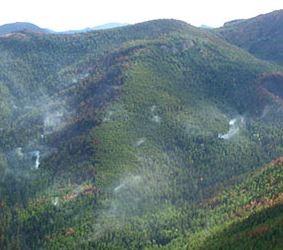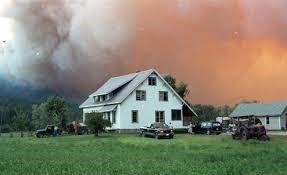Jun 8, 2015
The fire prevention awareness and company inspection training program is designed to raise the awareness level about fire prevention and to train on-duty fire suppression staff to confidently perform company level fire prevention inspections of low occupant load – low risk buildings in your community. Target buildings are those in Occupancy Groups A2, C, D, E or F1 that have a history of compliance or have only experienced minor fire safety deficiencies in the past. This sector will probably comprise over 70 percent of the public buildings in your community.
Click here to read more
Jun 8, 2015
Fire season is just getting started, but already the country has seen twice the number of forest fires compared to last year. To date, 2,549 fires had ignited across 263,201 hectares of forest. Compare that to the same time last year: there were only 1,195 fires that had burned just 25,866 hectares.
Click here to read more

May 7, 2015
It’s been a year since a warehouse exploded nearly killed three Mississauga firefighters. The trio were trying to enter a side door of the building when the explosion occurred and a cinder block wall came down on them. After a lengthy investigation charges have been laid under the fire protection and prevention act against the owner and the corporation. The allegations have not yet been proven in court.
Click here to read more.

May 7, 2015
Victoria fire inspectors have discovered that fewer multi-unit buildings were compromised than originally thought after only six access keys were determined to be missing from the nearly 500 buildings lock boxes. The fire department said that 35 keys were missing from the boxes on the outside of commercial or residential buildings but after checking with property managers, fire inspectors determined some of the lock vaults were empty because no keys had been stored in them. All of Victoria Fire Department’s master keys are accounted for leaving the fire department and police unsure how someone could have breached the lock boxes.
Click here to read more.

May 7, 2015
You would think the U.S. Forest Service would have a sophisticated fire-prevention network in place but apparently nothing beats a human being with a pair of binoculars and a healthy knowledge of the forest mountain tops for spotting a brush fire. The U.S. Forest Service’s fire-fighting force includes a platoon of retired folks who trudge up a mountain always keeping their eyes peeled for puffs of smoke.
Click here to read more.

May 7, 2015
Canadians are making their communities safer as they participate in the first National Wildfire Preparedness Day in Canada. Twenty-four groups across the country received funding to support local mitigation projects aimed at reducing the risk of wildfire damage in their communities. Partners in Protection hope that today’s inaugural Canadian National Wildfire Community Preparedness Day will be the start of a growing annual event that builds awareness and education, and ultimately reduces the threat of wildfires in Canada.
Click here to read more.
May 7, 2015
With home inspections now underway for the new mandatory carbon monoxide (CO) detectors, Timmins firefighters began going house to house through city neighbourhoods to make sure those detectors are working properly. Fire Chief Mike Pintar commented that many homeowners find the home inspections to be reassuring but he understands that not everyone is ready to accept people into their homes. If they don’t want us in, for whatever reason, we can ask if an inspector can come by later,” said the chief.
Click here to read more.

May 7, 2015
In a bid to promote rail safety, the Canadian government has issued an emergency directive to ensure that trains which carry dangerous goods like crude oil and ethanol slowdown in urban areas. The directive requires the trains not to operate at speeds more than 64 km/hour in highly urbanized places as opposed to the previous speeds of up to 80 km/hour.
Click here to read more.

May 7, 2015
Canada’s Greater Vancouver is home to a bird species so polluted with chemicals, it is resistant to fire. A team of Canadian researchers identified Cooper’s Hawk as the most polluted wild bird species in the world after analyzing liver samples from Vancouver’s birds of prey.
Click here to read more.
Apr 6, 2015
Fires are ravaging the forests of Russia and Canada, burning at a higher rate in some cases than at any time in the past 10,000 years. High-resolution satellite maps showed the two nations lost a combined average of nearly 6.8 million hectares (26,000 square miles) per year between 2011 and 2013.
Forests burning at alarming rate






